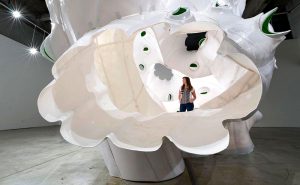Nature Does it Better: Biomimicry in Architecture and Engineering
November 22, 2016
by Zack Mortice The most important convergence of design and biological sciences today relies on “innovation” that’s millions, if not billions, of years old. Biomimicry is the imitation of the models, systems, and elements of nature for the purpose of solving complex human problems; biomimicry in architecture and manufacturing is the practice of designing buildings and products that simulate or co-opt processes that occur in nature. There are ultrastrong synthetic spider silks, adhesives modeled after gecko feet, and wind-turbine blades that mimic whale fins.“The way biological systems solve problems is pretty different from the way engineered systems solve problems,” says Peter Niewiarowski, biologist at the University of Akron and its Biomimicry Research and Innovation Center.
Human-designed solutions, he says, are crude and additive. They rely on using more materials or energy to accelerate reactions—both costly expenditures. Natural processes rely on unique geometry and material properties… Read more at Redshift
